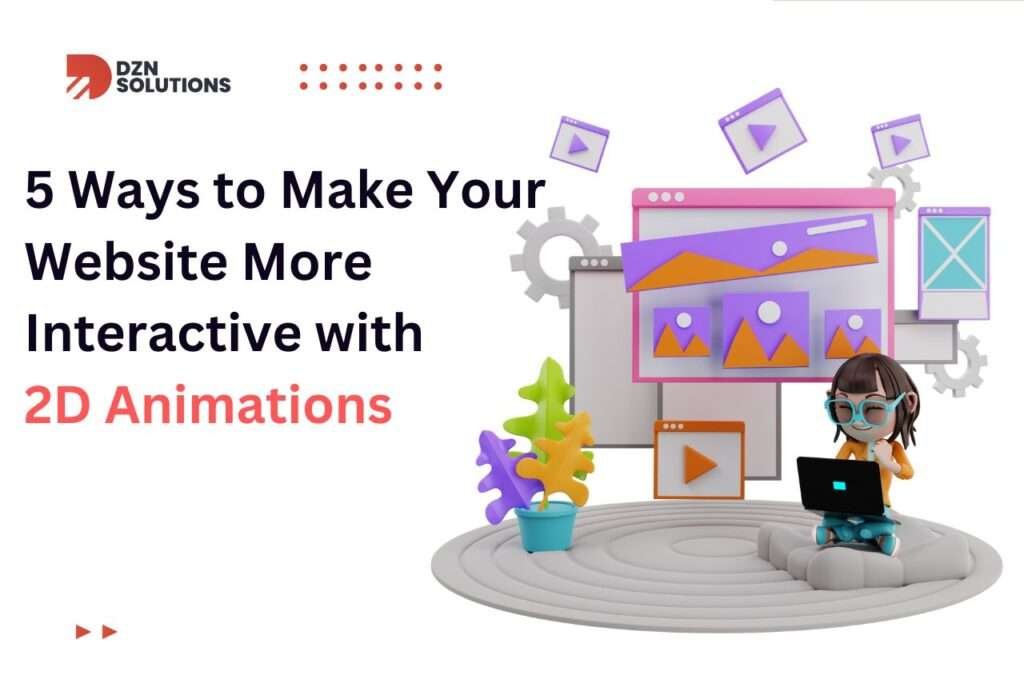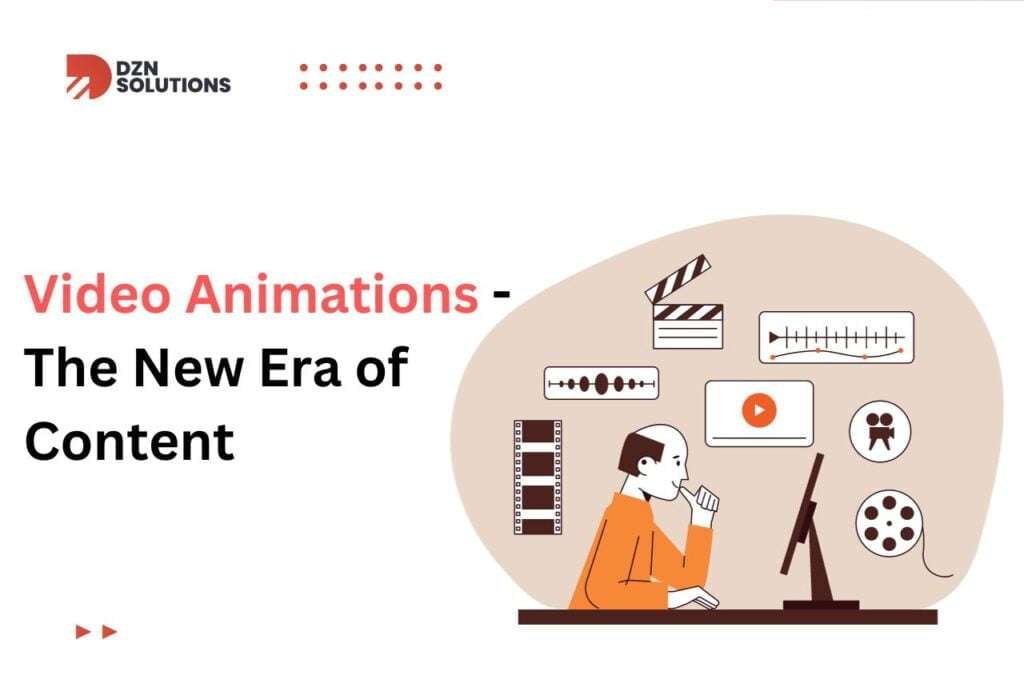There are tons of ways to talk to your audience online. But what are the best ones, have you ever observed? While you are reading this, I am sure that you have a social media account. So, what do you spend most of your time on? I’m assuming and quite sure that it is watching those short 2 to 3-minute videos that encapsulate your mind and attention. This is where video animations play a drastic role, to talk to the audience and to convey the brand message across.
Let us go through in detail what video animations are and what role they play in making your marketing campaigns a success online.
Why are video animations important?
Videos are the most successful tool in communication. They are engaging, informative, and captivating, and compel the audiences to take necessary actions through increased engagement and interest.
Video animations take multiple friends, like advertisements, product guides, episodic cartoon stories for public awareness, informative videos for education purposes, and whiteboard animations for making explainer videos.
How are video animations done?
This is certainly a question that strikes many. Often people confuse basic videos with video animations. But that is not certainly the case.
Video animations are done keeping in mind minute technicalities and great efforts. Still, they are easier to make than the traditional videos that require multiple camera setups and the use of props, locations, makeup artists, actors, technicians, and other staff.
Video animations only require a great tool for making videos and an expert who understands video making and animation.
Video animations are made by using original ideas of sketches, drawings, illustrations, and computer effects. These kinds of videos are quick to make and get the most of the audience’s attention.
Below is a list of the kinds of video animations that are widely used.
Kinds of video animation:
-
- Traditional animation
-
- 2D Animation
-
- 3D Animation
-
- Motion graphics
-
- Whiteboard animation
-
- Infographic animation
-
- Animated cartoons
Let us now look at these in depth.
Traditional animation:
Traditional animation requires the animating artist to draw images on paper using a traditional ink pen. So, drawings in sequences are made to create the effect of animation. You have classic examples of Disney. Traditional drawings are also famous hand-drawn animations. They have primarily ruled the big cinema for the longest time. Traditional animations just like everything also have come a long way and do not need traditional photography of each frame to get the animation done. It can be done impeccably by using the computer.
2D Animation:
Animations that are created in two dimensions are famous 2D animations. The main components of 2D animations are width and height. 2D animation uses software to move the character drawing to create animations. 2D animation has spiked the animation industry and spiked its use in cartoons, videos, and web series.
3D Animation:
3D animation is typically famous for CGI or computer-generated images. It involves the creation of 3D images through the use of computers in a visual environment. Introduces in the 90s, this technique also followed the frame-by-frame animation concept of 2D animation. A nice digital space is provided for the characters to get animated. More kinds of visual effects are also added to incorporate a realistic touch to the animated videos. 3D animations and 3D animated videos are largely allow in the advertising industry, movies, games, commercials, architecture, and education.
Motion graphics:
Motion graphics is famous to be a very diverse technique of storytelling. It allows the creation of animation videos and also incorporated elements of graphic design into it. The major component is text, which allows for the explanation of concepts in the video. Examples of motion graphics animation can be the lyrics or subtitles added in the video of any song, or a documentary.
Whiteboard animation:
Whiteboard animation videos are also famous explainer videos, which bring together drawings, text, and objects/shapes together to explain a product or a concept in a digital environment. To capture the viewer’s attention. As a result, the effects of object stimulation are benefiting from a simple whiteboard. Notepads, whiteboards, blackboards, glass boards, and green boards are all common types of whiteboards. An expert in creating whiteboard animation videos surely knows how to crack the code for making these videos and using them in the favor of the brand.
Infographic animation:
Infographic animations are use when information and graphics are combine to present a complex idea through an animated video. The visual representation through these two elements makes the video interesting, engaging, and captivating. Infographic animation videos combine colors, text, images, and information to make the video aesthetically appealing and easily understandable.
Animated cartoons:
Animated cartoons are the perfect example of how engaging video animations can be. So, multiple drawings are stimulated to form movement or animation. The examples include your favorite cartoons like the Lion King.
Now that we are okay with the kinds of video animations that are available and possible. So, it is time to go through the benefits of using video animations as part of your digital marketing strategy.
The benefits of using video animations:
-
- Video animations are perfect for capturing and making the most of the shortest attention spans of today’s generation. The message is delivered subtly, in an entertaining way through video animations.
- Video animations work tremendously to capture the viewer’s attention in this ever-competitive market. While all your competitors are sprinkling countless videos, it is highly unfair if you don’t take advantage of it.
- Video animations are easy and light on the budget and pocket. When the massive costs of traditional videos are excluding, the original cost of making animated videos goes down tremendously and reaps the same advantages of traditional videos.
- Animated videos are fun, engaging, and entertaining to watch. When you entertain your audience, they are more likely to come back to your social media handles for more.
- Animated videos help to recall the value of the business they belong to. Subtly displaying your logo, message, products, and aims through the video is a great way to retain value.
- Video animations are a quick way to simplify and explain highly complex topics. Even the most boring ones become highly interesting by using video animations.
- Video animations are also a great tool for adding sentiments and invoking emotional reactions in your audience. This also helps to get the brand’s message across smoothly.
- Video animations also increase conversion rates, they motivate the viewers to become consumers by buying your products and services. It is always great to add an animated video to your website.
Conclusion:
The above-stated points are the multiple benefits of using video animations and whiteboard animations for the benefit of your business. Now are the times when everything is digital and the cost element of every aspect has gone down tremendously owing to multiple tools and work areas getting simplified and digitalized. So, if you do not benefit from these tools of video animations and whiteboard animations, you are simply being in the dark and getting behind the cut-throat competition this digital era is. The businesses that have re-invented themselves and have become part of the Tech-Digi league are the ones that have come forward with the highest market shares and loyal consumers. So, it is high time you beat them!


